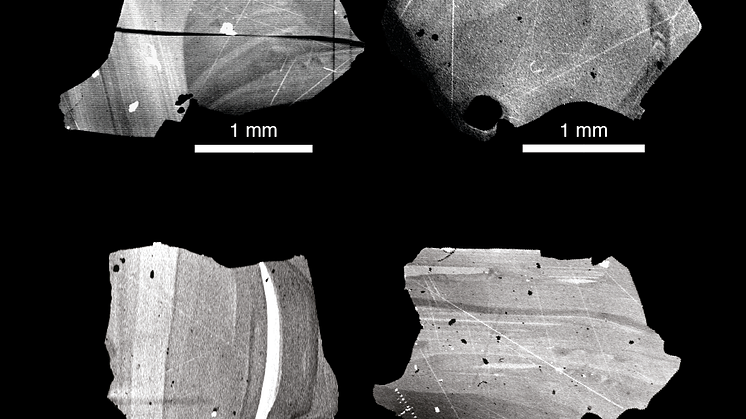Press release -
The secret of the supervolcano
Researchers have now found an explanation for what triggered the largest volcanic eruption witnessed by humankind. The volcano’s secret was revealed by geochemical clues hidden inside volcanic quartz crystals.
The deadliest volcanoes on earth are called supervolcanoes, capable of producing cataclysmic eruptions that devastate huge regions, and cause global cooling of the climate. The Indonesian supervolcano Toba had one of these eruptions about 73,000 years ago, when 2,800 cubic kilometers of volcanic ash was ejected into the atmosphere and rained down and covered enormous areas in Indonesia and India.
Scientists have long debated how these extraordinary volumes of magma are generated, and what makes this magma erupt so very explosively. A team of researchers at Uppsala University, together with international colleagues, have now found intriguing clues hidden inside millimeter-sized crystals from the volcanic ash and rock.
“Quartz crystals that grow in the magma register chemical and thermodynamical changes in the magmatic system prior to eruption, similar to how tree rings record climate variations. When the conditions in the magma change, the crystals respond and produce distinct growth zones that record these changes. The problem is that each ‘tree ring’-analogue is only a few micrometers across, which is why they are extremely challenging to analyse in detail,” says Dr. David Budd at the Department of Earth Sciences, Uppsala University.
The researchers analysed quartz crystals from Toba, and found a distinct shift in the isotopic composition towards the outer rim of the crystals. The crystal rims contain a relatively lower proportion of the heavy isotope 18O compared to the lighter 16O.
“The low ratio of 18O to 16O contents in the crystal rims indicate that something in the magmatic system changed drastically just before the big eruption. The explanation behind these chemical signatures is that the magma melted and assimilated a large volume of a local rock that itself is characterised by a relatively low ratio of 18O to 16O . This rock type also often contains a lot of water, which may be released into the magma, producing steam, and thereby an increased gas pressure inside the magma chamber. This rapidly increased gas pressure eventually allowed the magma to rupture the overlying crust, and send thousands of cubic kilometres of magma into the atmosphere,” explains Dr. Frances Deegan at the Department of Earth Sciences, Uppsala University.
Luckily, these cataclysmic super-eruptions happen very rarely.
“Biologists have previously shown that this particular eruption at Toba pushed humanity close to extinction. It will hopefully take many thousands of years, but the fact is it is only a matter of time before the next super eruption, maybe at Toba, Yellowstone (USA), or somewhere else. Hopefully, we will know more and be better prepared next time!” says Professor Valentin Troll at the Department of Earth Sciences, who led this study of Toba quartzes at Uppsala University.
For more information, please contact Valentin Troll, tel: + 46 18-471 2570, email: Valentin.Troll@geo.uu.se
Budd, D.A., Troll, V.R., Deegan, D.M., Jolis, E.M., Smith, V.C., Whitehouse, M.J., Harris, C., Freda, C., Hilton, D.R., Halldórsson, S.A., & Bindeman, I.N. (2017) Magma reservoir dynamics at Toba caldera, Indonesia, recorded by oxygen isotope zoning in quartz. Scientific Reports | 7:40624 | DOI: 10.1038/srep40624 1
Topics
Uppsala University -- quality, knowledge, and creativity since 1477
World-class research and outstanding education of global benefit to society, business, and culture.
Uppsala University is one of northern Europe's highest ranked academic institutions. www.uu.se

